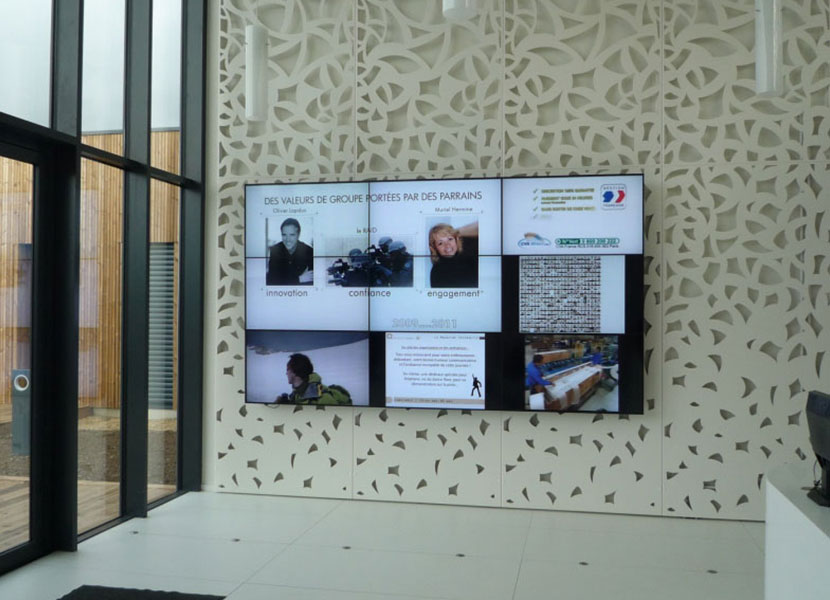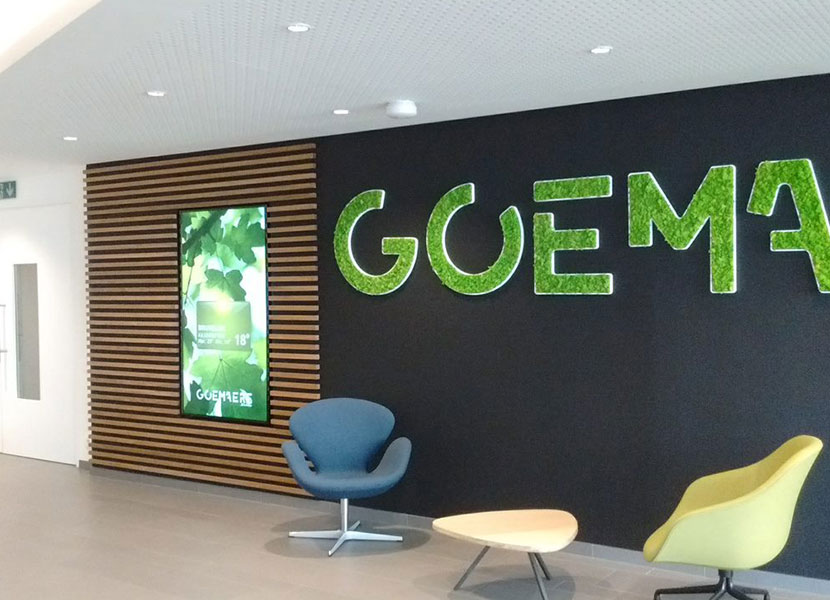- The benefits of dynamic screens go beyond the transmission of content. They are potentially more than just a means of communication.
- Dynamic screens can be interactive tools. Digital totems or kiosks installed in an establishment offer greater autonomy to the public. As a result, they can take charge of part of their needs (an order, pre-registration, etc.). This reduces their waiting time.
Dynamic screen – the ally of your marketing strategy

For a company, strategy is the art of moving from its current position to a desired position, taking into account the dynamics of the market. It is a fundamental approach to managing growth. That’s why the installation of a dynamic display is becoming a relevant choice in the company’s development.

When applied to marketing, the strategy places all the objectives of image and brand awareness within a coherent action plan. We’re talking about strengthening the sales force, creating new business opportunities, improving customer knowledge, penetrating new markets, etc. Working on the perception of the company (its products and services, its reputation, etc.) is a major part of the marketing strategy. It relies on the effective use of communication levers: the dynamic screen is one of them.

Knowing the mistakes to avoid when installing dynamic screens is the first step. But to make digital signage an ally in its marketing strategy, a company can draw on the main strengths of digital communication (and the conditions for their success). They deliver performance at every level: in terms of capturing audiences, memorising messages and customising content. We’ll also be talking about the efficiency of communications campaign management (by encouraging teams to be agile and responsive).
Discover the five major strategic marketing issues to which dynamic displays can make a positive contribution:
Signage: why choose a dynamic screen?
- Billposting is one of the traditional media, i.e. one of the means of disseminating content:
– Of any kind: print, animated or video.
– To meet any communication objective: to inform, promote, entertain, etc. - Companies appreciate outdoor and indoor displays largely for their effectiveness. They capture the attention of a wide range of audiences as they travel, particularly in urban environments. Visual content attracts the eye and, as a result, increases the rate at which messages transmitted by a company are remembered. This is one of the ways in which dynamic screens differ from traditional displays. They are even more effective at capturing the attention of audiences thanks to the animated nature of digital content. The human eye is naturally attracted to movement.
- But capturing attention can lead to action. For example, a dynamic screen installed in a shop window increases its appeal. Media Report has measured this: it generates 10 times more visual contacts than a traditional window display and increases its appeal by 15%. By being better able to ‘seduce’ passers-by and encourage them to enter, a window display equipped with a dynamic screen can increase footfall in a shop. Ultimately, it can increase the likelihood of a product or service being purchased (and therefore the company’s sales performance).
- What’s more, the installation of dynamic screens fits in well with the social and environmental concerns of our time. Creating a positive impact through CSR (Corporate Social Responsibility) goes beyond marketing strategy. It impacts the entire organisation. However, dynamic displays can play a part in this. Thanks to LED technology, dynamic screen manufacturers have been able to develop a number of innovations. These reduce the energy consumption of displays and allow them to be recycled.
Acting and interacting more effectively with audiences through digital technology using a dynamic screen
- The potential benefits of interaction with the public are manifold. All of them can be used to support a company’s marketing strategy.
Depending on the type of dynamic screen, a company can :
– Improve organisational efficiency: for example, by simplifying the management of the flow of people in an establishment.
– Increase sales: through up-selling or by increasing the number of orders taken.
– Offer a more attractive customer experience: for example, by making waiting times less stressful through entertainment.
Being agile and measuring la performance digitally with the dynamic screen
Communication tools
Dynamic screens are connected communication tools. Content is linked to a central control system. The content displayed can be changed instantly and easily.
The benefits
A number of benefits flow directly from this connectivity. The management of a company’s marketing strategy is made easier by a range of possible actions, such as :
– Multiplying the information transmitted to marketing targets.
– Varying the type of content broadcast according to the time of day (content programming is often one of the functions integrated into LED advertising panels. More generally in dynamic displays).
– Minimise the risk of errors: if a company realises that the content being used is inappropriate or contains an error, it can change it very quickly. Among other things, this allows the company to adopt a “test and learn” approach. In other words, it learns from its attempts to find the most effective communication practices and techniques.
Marketing strategy
A company’s marketing strategy is also based on the observation and analysis of its activities. The aim is to make the best choices and improve all communication actions. Dynamic screens make it easier to measure the effectiveness of marketing campaigns. They gather a wealth of information that can be used to assess the impact of content transmitted to audiences. This measurement is even more effective for interactive tools, because the audience’s journey through the interface can be tracked and studied.

Get to know your customers better and enhance their experience with a dynamic screen
The digital and numeric properties of dynamic screens mentioned above make a direct contribution to the fundamental challenges of corporate marketing strategy:

Improving customer knowledge
As a general rule, companies rely on a good knowledge of their customers to make decisions that promote their growth. They also use it to personalise their marketing and communications activities. A company can study the preferences of a connected customer, estimate which products and services are most likely to interest them, and so on.

Enhancing the customer experience
Dynamic content (animated or video) is entertaining and enhances the appeal of a reception or sales area. The effect is multiplied tenfold when an establishment is equipped with several synchronised dynamic screens.
A key trend for businesses receiving the public is the implementation of an omnichannel customer journey. This is a fluid customer journey where several terminals (smartphone, website, digital totem, etc.) are used at different stages of the journey, but without hindering its continuity. While customers appreciate the convenience and simplicity of an omnichannel pathway (pre-ordering on their smartphone, adding items once in the shop using a kiosk, paying at the checkout, etc.), companies benefit from greater organisational and operational efficiency.
Create differentiated communication campaigns

n practical terms, it is possible to manage all of a company’s dynamic displays from a single workstation. Dynamic displays are connected to a centralised system. Thanks to this property, a company’s marketing teams can adapt the content displayed on each screen. In particular, they can create differentiated communication campaigns (by region, by establishment, by type of audience, by time of year, etc.).
Dynamic screens are therefore an ally in a company’s marketing strategy. They make it easier to personalise content (which is one of the main factors in the performance of communications).
If you’d like to find out more about managing dynamic displays, take a look at our tips for a successful advertising campaign.
The digital nature of dynamic screens makes them practical and effective communication tools. They respond to the principles of marketing strategies. They help to achieve key objectives: customer knowledge, personalisation of content, implementation of an omnichannel pathway, etc. In addition to the performance of digital communication, dynamic screens contribute to the organisational, operational and commercial performance of companies.
In the same
categorie

10 tips for choosing, installing and using your digital signage system

Installing dynamic screens – mistakes to avoid
